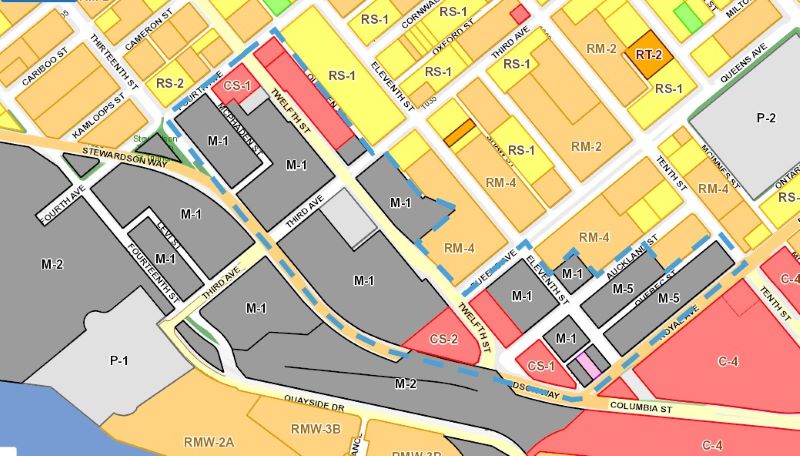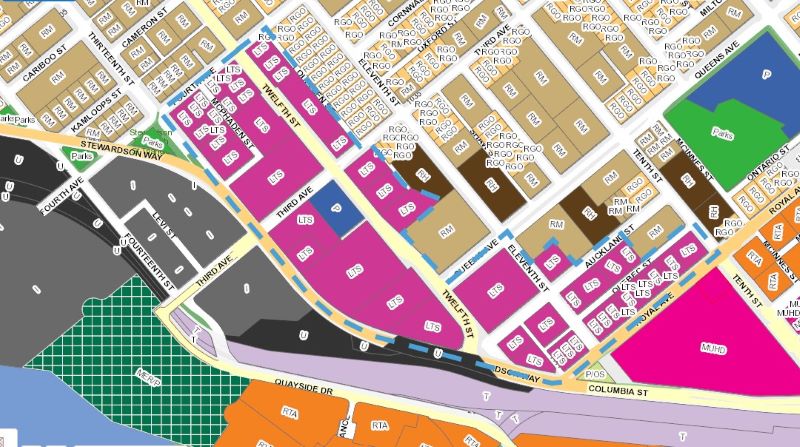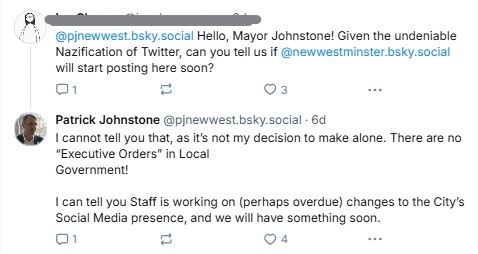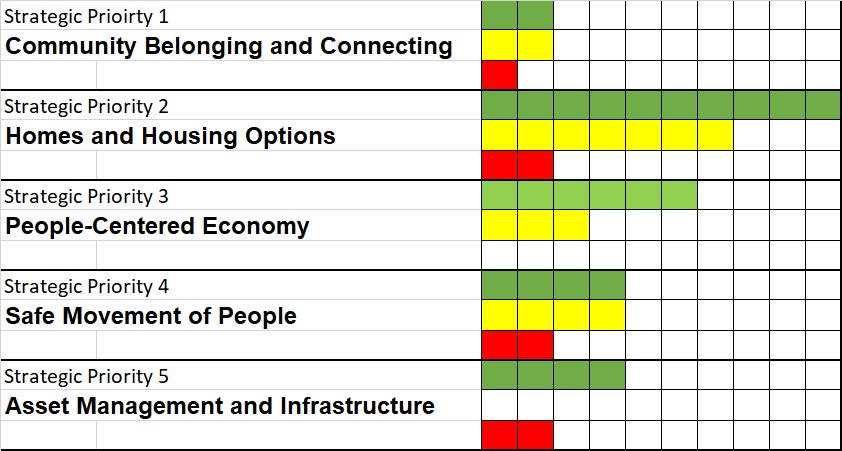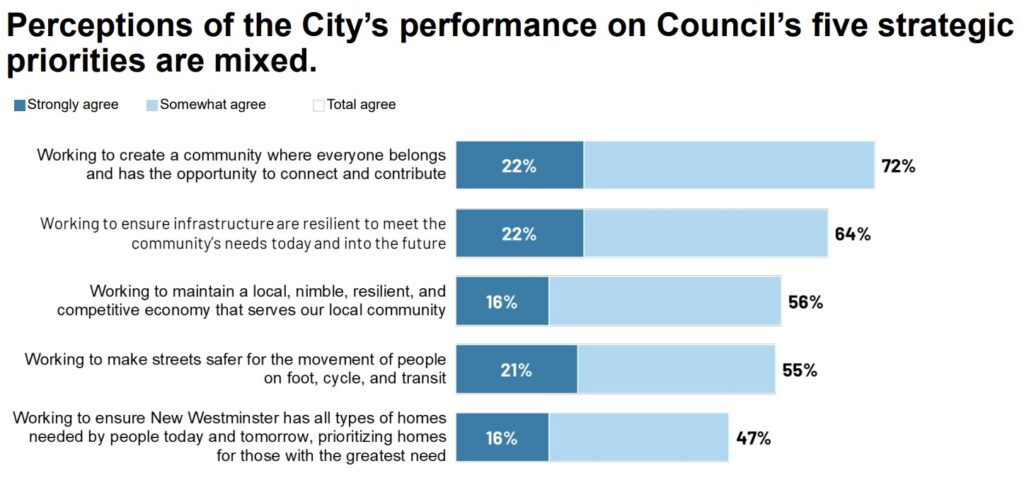It was quite the Council meeting on Monday, not because of the regular business of Council, which was pretty straight forward, but because the level of political performance that occurred in the last half of the evening was outstanding. Some of my more unfiltered feelings about that part are best saved for the Newsletter (subscribe here, its free!), so I’ll keep to the straight goods on the agenda here.
We started with one piece of Unfinished Business.
Metro 2050 Type 3 Amendment Application: City of Surrey (7880 128 Street)
When a city in Metro Vancouver makes an Official Community Plan change that impacts the Regional Growth Strategy, it requires an RGS Amendment to be approved by the Metro Vancouver Board. There are a few different types of amendments, and Type 3 amendments require “consultation” with the member communities of Metro Vancouver. We are able to ignore this, respond to it saying “hunky dory”, or reply saying we don’t support it. The Metro Board will consider our feedback when making a decision, though they are not required to follow our recommendation.
This Type 3 amendment in Surrey is pretty minor in its regional impact, but New West Council asked for more info on it before sending feedback. Surrey declined to provide more info or present, and Council voted to send a note indicating we do not support this amendment.
We then moved the following items On Consent:
Construction Noise Bylaw Exemption Extension Request: 330 East Columbia Street (Royal Columbian Hospital Redevelopment Project)
There has been significant traffic disruption as underground and surface paving works have been occurring around the RCH expansion. The priority here is always assuring emergency vehicle access and the safety of pedestrians in such a high-traffic area. This means convenience for through drivers has suffered quite a bit, but this is a unique place to do major road works. The final paving will be happening in October, and they need to do some of it at night in order to manage the traffic and assure road safety and emergency vehicle access, which requires a Construction Noise Bylaw exemption. There will be *significant* disruption for a three-night window here, so plan alternate routes if you can, folks.
Construction Noise Bylaw Exemption Request: 100 Braid Street (Wesgroup Contracting Ltd) – Crane Removal
The crane on 100 Braid Street is coming down, and its proximity to one of the busiest intersections of the City makes this much more viable at night, which requires a Construction Noise Bylaw exemption.
Expanding the Metro West Inter-Municipal Business Licence to Include Health Care Professionals and Services, and Annual Licence Fee Increase
The City works with our adjacent municipalities to allow shared business licences for those types of businesses that move across City boundaries, and we are adding home care providers to that list, meaning health care professionals can get just one license to operate in Vancouver, Burnaby, Delta, Richmond and Surrey. This simplifies their lives considerably. This report reads the Bylaw but provides an Opportunity to be Heard at the November 4 Council meeting before we adopt it. If you have opinions, let us know.
Licence Agreement at 203 Pembina Street
Folks are building townhouses in Queensborough, and need to pre-load a laneway, and will need to bypass a sanitary sewer through that laneway during pre-load, meaning they need to get a license agreement with the City to manage risk and liability.
The following items were Removed from Consent for discussion:
Guidelines and Decision-Making Matrix for Designating Municipally Significant Events
British Columbia’s liquor laws are archaic. Several events in the City over the last two years have sought to be designated “Municipally Significant” so they can serve a different sized beer (believe it or not) and can set a price for alcohol that actually makes them a bit of money running a beer garden as part of their event. But there are no criteria for what is considered “municipally significant”.
This criteria (and delegating the authority to staff) is a first step, but in the report it is clear staff are working on some more comprehensive liquor licence reforms in the City, because the current provincial/municipal interface on this is Byzantine.
Update Regarding Council Motion Re: Improving the Public’s Access to Trees during the City’s Biannual Tree Sale
This report is no report – they are just to report that staff are going to report back once they have had the time to do the work required to inform the report.
We then had the following Bylaws for Adoption:
Anvil Theatre Fees and Charges Bylaw No. 8209, 2020, Amendment Bylaw No. 8482, 2024;
Climate Action, Planning & Development Fees and Rates Bylaw No. 7683, 2014, Amendment Bylaw No. 8478, 2024;
Cultural Services Fees and Charges Bylaw No. 7875, 2016, Amendment Bylaw No. 8477, 2024;
Electrical Utility Bylaw No. 6502, 1998, Amendment Bylaw No. 8476, 2024;
Engineering User Fees and Rates Bylaw No. 7553, 2013, Amendment Bylaw No. 8472, 2024;
Fees Bylaw No. 6186, 1994, Amendment Bylaw No. 8479, 2024; and
Fire Protection Bylaw No. 6940, 2004, Amendment Bylaw No. 8481, 2024
These Bylaws that all set their respective fees and charges rates for 2025 were adopted unanimously by Council. Now we can start working on the budget.
We then had a full schedule of Motions from Council:
Requesting an Inquiry Under Section 765 of the Local Government Act regarding Metro Vancouver
Submitted by Councillor Fontaine
WHEREAS the governance model at Metro Vancouver is over 50 years old and an independent review should be undertaken by the Province of BC; and
WHEREAS the Inspector of Municipalities of British Columbia has significant statutory powers including the ability to investigate any bylaw, order, decision, or action of the Greater Vancouver Regional District Board; and
WHEREAS to date the Province of BC has not agreed to undertake a governance review of Metro Vancouver;
BE IT RESOLVED THAT the Mayor write a letter on behalf of Council to the Premier and request the Province of BC to immediately initiate an independent review of Metro Vancouver’s governance structure.
This was a weird motion, as it was never explained what the relevance of Section 765 of the LGA was about, but we don’t vote on the “whereas” sections, so opportunity lost for clarity there. Council agreed to send this letter, though I wonder what the purpose is (other than getting another media cycle out of this horse well flogged) as we are now onto a year of a very few people asking the same thing (including pervious motions at this Council) and no leader of the three parties vying for the Premier job in two weeks have expressed any interest in undertaking this right now, as it solves no problems and we have actual problems to solve.
Supporting Increased Tourism in New Westminster through the Introduction of a New “Photographable” Sign on Pier West Park
Submitted by Councillor Minhas
WHEREAS Pier Park West is now reconnected to the eastern part of the Quayside boardwalk and provides a pleasurable place for locals and tourists to enjoy views of the Fraser River; and
WHEREAS a number of cities around the world have used enlarged signage in highly visible and photographable areas to attract visitor and help market their cities; and
WHEREAS we have the opportunity to install a large “New Westminster” sign on our waterfront with the backdrop including several bridges and the Fraser River;
BE IT RESOLVED THAT staff reach out to Tourism New Westminster and advise that Council would be supportive of installing of a large “New Westminster” sign on our waterfront as one additional method of attracting tourists to our city and downtown district.
Yet another weird motion, as it seems like a notion someone had that could have been an email instead of a Council motion. The will result in an email saying we might support something that is not defined to an organization that has not clearly indicated any intent to do the thing, so innocuous enough. And Council voted to support it.
To quote a colleague, I have a lot of questions around the actual proposal (do people actually travel to places specifically to get a picture of the place name? What is the evidence this will drive any of the massive spin-off economic development benefits the mover suggested, and how will those benefits be offset by the mover spending his time on regional media describing the neighbourhood as a dangerous, abandoned place few dare to tread? Isn’t this Tin Soldier Erasure? Wouldn’t it be more compelling and drive more regional interest if to have the sign say “Sto:Lo” or “sχʷəyem”? and many more, if we get to the point of actually reviewing a project).
Supporting increasing Cycling, Tourism and Economic Activity through a Pilot “Cycling Sundays on Front Street”
Submitted by Councillor Fontaine
WHEREAS the Province of British Columbia has already closed Front Street for extended periods of time and redirected traffic to other routes throughout the City; and
WHEREAS there is currently no ability for cyclists to easily and safely ride their bikes from Pier Park West to the Brunette Fraser Regional Greenway in Sapperton; and
WHEREAS other cities across North America have successfully closed roadways on weekends to permit alternate modes of transportation such as cycling and pedestrians.
BE IT RESOLVED THAT staff report back on the feasibility and operational issues pertaining to the development of a pilot project that would: during daylight hours, close Front Street on Sundays from May to September 2025 to vehicular traffic; and a during the period noted above, open up Front Street to cyclists, pedestrians and other forms active transportation while it is temporarily closed to vehicular traffic; b. seek interest from food trucks and other micro businesses who may want to set up on Front Street during the ‘Cycling Sunday’ closures.
This idea, first brought to you by Mayor Cote during COVID times as part of the “Streets for People” program of the time, is something the City always meant to explore further after the Pattullo Bridge project stopped occupying the space. It is still a god idea, not without its challenges, as there are significant costs involved, we need to work with the regional goods movement sector, the connections to Sapperton Landing Park still require Railway oversight, and the resultant impacts on Royal and Columbia Street of diverted truck traffic. Still, it’s a good idea to get a report back to Council on opportunities and challenges here. Council supported this motion.
Seek Support from the BC Ministry of Transportation to Undertake a Feasibility Study to Expand the Crossing Capacity between Queensborough and Connaught Heights
Submitted by Councillor Minhas
WHEREAS the City of New Westminster is currently undertaking a community consultation around the 22nd Street SkyTrain station which could result in up to 30,000 new residents moving into the neighbourhood; and
WHEREAS the residents of Queensborough can often suffer quality of life issues pertaining to delays crossing the four-lane Queensborough bridge during peak periods and beyond; and
WHEREAS it will take a significant amount of time, planning and inter-governmental discussions to undertake a future replacement or expansion of the Queensborough Bridge;
BE IT RESOLVED THAT Council direct staff to develop a consultation plan to determine the level of interest from our residents/businesses regarding prioritizing the future expansion or replacement of the Queensborough bridge; and
BE IT FURTHER RESOLVED THAT any expansion or replacement proposal should prioritize the movement of TransLink operated buses, cyclists, taxis, ride-share and pedestrians across the bridge; and
BE IT FURTHER RESOLVED THAT the Mayor write to the BC Ministry of Transportation to invite them to partner with the City during our Queensborough Bridge community consultation process.
This is one I will unpack a bit more in the Newsletter, because there are layers of weird governance ideas in here. In short, we just approved the Queensborough Transportation Plan in May after more than a year of public consultation and working with the Ministry of Transportation and are now implementing that plan. Consistent with the QTP, staff reported to us recently that active transportation and transit priority work is going on related to the bridge entrances, on both sides, both through the QTP and our recently approved partnership with TransLink on Bus Speed and Reliability program approved by this Council in July. So why this motion now, just as we are starting implementation of those plans?
I also have concerns with the language here, first because it asks the City to launch Public Consultation on a project that doesn’t exist to address a piece of infrastructure that doesn’t even belong to the City. Worse, it seems to envision expansion or replacement of the bridge, which is not consistent with our Transportation plans in the City, regional Transport2050 goals at Metro Vancouver or TransLink, or the Province’s own CleanBC goals, where the existing strategies for bus speed and reliability and active transportation are aligned with all of those.
Finally, I don’t want to get into a lecture here about the Fundamental Law of Traffic congestion, but adding lanes to a highway in an urban area has never solved congestion, and has almost always resulted in significant negative impacts on the communities through which those freeways are driven. This is not the first time someone has proposed that a community be plowed down and paved over in order to save that neighbourhood has been proposed, and in the end all that neighborhood got was more traffic, more congestion, more noise and pollution. The future here is alternatives, and the work that staff are doing to bring bus speed and reliability and safer active transportation connections on this route is the sustainable path that meets the Province’s CleanBC goals, the regionals Transport2050 goals, and the City’s Transportation, livability, and sustainability goals.
So Council severed this motion, didn’t support the first “Be It Resolved”, did support the second and the third, after the third was slightly amended to make clear the City will not lead a consultation. But if the province want to take this up, let us know.
Sue Big Oil Class Action Lawsuit
Submitted by Councillor Henderson
WHEREAS the City of New Westminster manages, maintains and prepares municipal infrastructure to protect our residents from future heat waves, wildfires, flooding, and other climate impacts, thereby safeguarding the health and safety of our residents and their property and as a result faces massive costs due to climate change, which are expected to increase; and
WHEREAS fossil fuel companies were warned by their own scientists decades ago that the ongoing burning of fossil fuels would cause massive suffering and climate costs, and chose to lobby against action on climate change so that the industry could continue to earn on average over a trillion dollars in profit each year in recent years; and
WHEREAS it is unacceptable and creates a perverse incentive for irresponsible fossil fuel development that local governments and taxpayers bear the full extent of these climate costs whilst multinational fossil fuel companies take no financial responsibility for the harm caused by their products; and
WHEREAS over 20 local governments in the United States and around the world, including nine local governments in BC, have filed lawsuits to recover a share of their climate costs (e.g. for loss and damage, adaptation, and climate preparedness) from fossil fuel companies, and Canadian legal experts recommend that Canadian local governments do the same;
BE IT RESOLVED that staff report back on opportunity and cost for New Westminster to join the Sue Big Oil Class Action Lawsuit and present potential cost and staff resource needs as part of the draft 2025 Operating Budget; and
BE IT FURTHER RESOLVED that the cost of joining the Sue Big Oil class action lawsuit be first assessed via the Climate Action Decision-Making Framework to determine the appropriate funding source.
This also gets a mention in the newsletter, because I cannot square indicated concern about the cost of this motion with a weird attempt to strip the City of Millions of dollars of Low Carbon Fuel Credit revenue in an attempted amendment, but that’s just politics.
I supported this motion, and it was supported by the majority of Council after several public delegations and a bit of a raucous Council debate. I can only speak to my reasons to support. The costs are real and being downloaded onto communities from one of the world’s most profitable industries every day. The Municipal Insurance Association of BC and UBCM are both calling for funding to address unprecedented climate disruption costs. We don’t have the power to end fossil fuel subsidies or tax big oil to the level that would reflect their corporate responsibility. What we can do is join our cohort municipalities across BC to use the courts to hold them accountable through the courts.
There can be no doubt that the oil industry knew that their products would have catastrophic impacts on global climate, and spent decades funding doubt-sowing “research” and suppressing their own evidence about this reality. Not only emulating the tobacco industries “deny at all costs” strategy about the horrific impacts of their products, but hiring the very same people (seriously, google Fred Seitz and Fred Singer) to run the denial machinery. They knew, they lied, and local government taxpayers are paying the bills for that choice they made. That should not go unpunished.
Finally, this motion is well drafted to add our support notionally, recognizing we will not be out of pocket unless a class action occurs, and allows us the opportunity to fund this small cost (in the scale of the cost of climate impacts in our community, this is tiny) through money we receive from the oil industry through the polluter pays principle and our Low Carbon Fuel Credit program. We are going to use the industry’s own money to sue them, and there is some elegance in that.
Finally, we had one piece of New Business:
Reconsideration of September 23, 2024 Motion on adoption the Interim Density Bonus Policy
After the last-minute decision last meeting to amend the Interim Density Bonus Policy for the City, I had some conversations with members of Council and staff about the implications for numerous in-stream applications. I was compelled to bring the Policy back to Council for reconsideration, because as amended, it varied greatly from our long-established and successful practice of incentivizing Purpose Built Rental over Strata in new development by not by giving them a free pass from DCCs and other development costs, but by exempting only the Density Bonus charge for space used for PBR. In staff’s attempts to make simpler and more transparent this very strange time with Provincial housing regulations being blended into our existing process while approvals continue to move forward, Council inadvertently made it less clear and more confusing by turning back on one of our key policy directions of the last decade.
Recognizing this is an interim measure, and Council always has the prerogative to vary from policy when it comes to approving any development, in the interest in supporting staffs efforts to keep the wheels moving during the transition, I suggested we adopt the motion Staff recommended in September, waiving DB payments for PBR as a policy until the full set of growth financing policies complaint with Bill 46 can be adopted next year. Council voted to support the reconsideration.
And that wrapped Council right at 10:30, the hour at which we are required by Bylaw to move for extension if we go past. So we’ll call that a full day.
